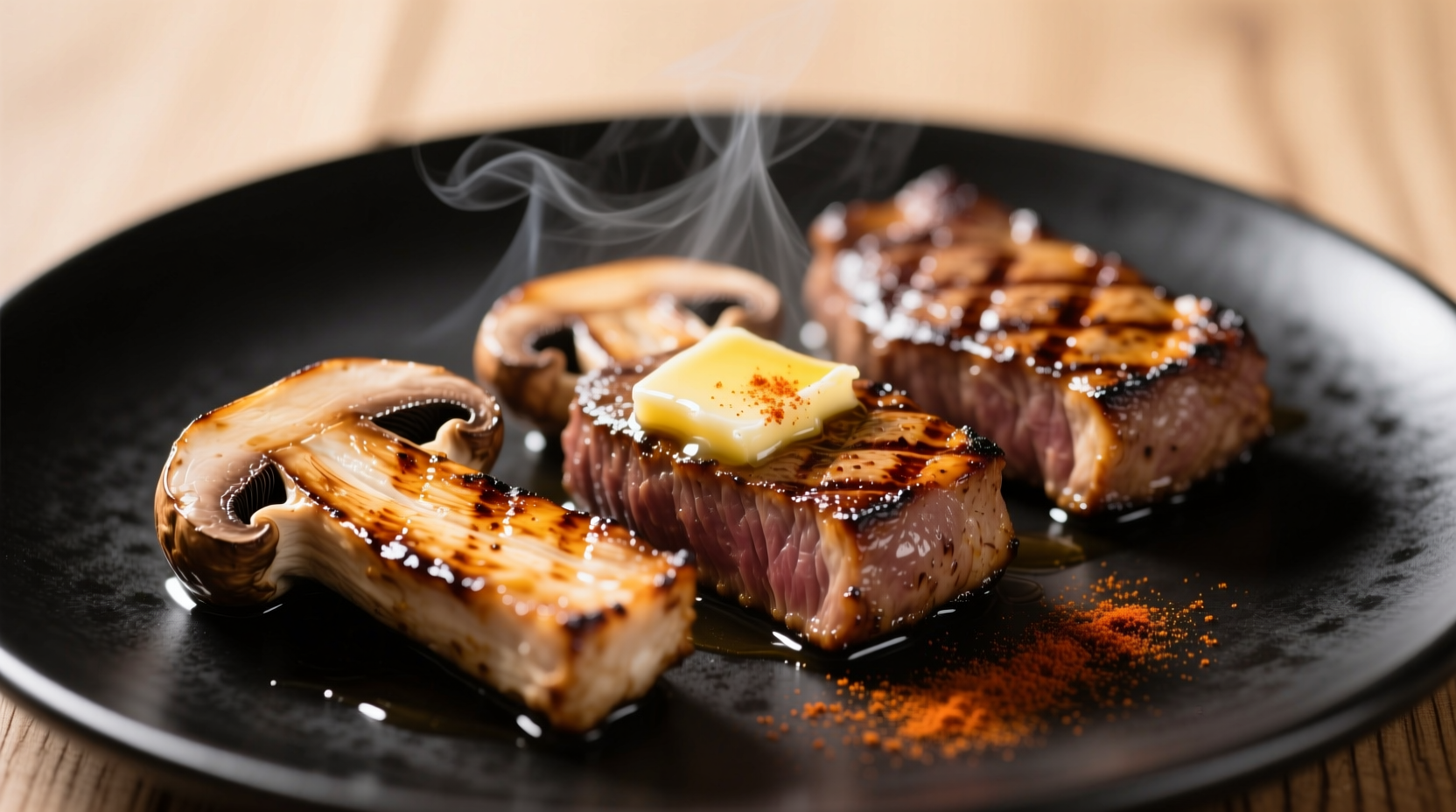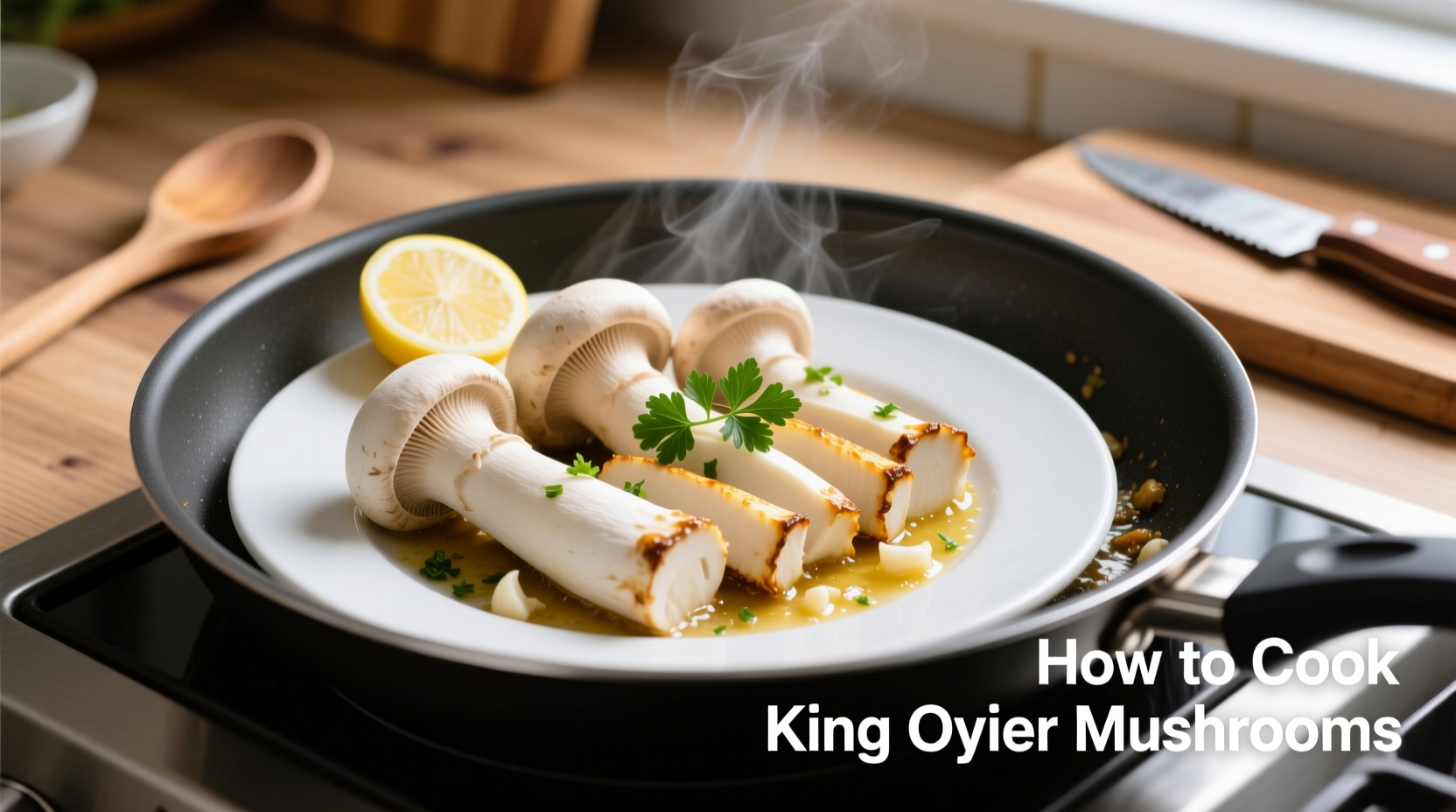King oyster mushrooms transform into tender, meaty delights when sliced lengthwise and seared over medium-high heat for 3-4 minutes per side. Unlike other mushrooms, they maintain a satisfying chew and absorb flavors beautifully. The secret? Don't overcrowd the pan and let them develop a golden-brown crust before flipping for optimal texture and umami richness.
Why King Oyster Mushrooms Deserve Your Attention
King oyster mushrooms (Pleurotus eryngii) stand apart from their woodland cousins with their thick, meaty stems and small caps. When properly cooked, they develop a remarkable texture that mimics scallops or even steak, making them a favorite among professional chefs and home cooks alike. Their unique cellular structure contains more chitin than other mushrooms, which explains their exceptional ability to hold shape while developing complex umami flavors during cooking.
Selecting & Storing Your Mushrooms
Look for firm, plump specimens with smooth, ivory-colored stems and tightly closed caps. Avoid any with dark spots, slimy surfaces, or dry, cracked edges. The best king oysters feel heavy for their size and emit a subtle, earthy aroma. Store them in a paper bag in your refrigerator's crisper drawer for up to five days. Never use plastic bags, which trap moisture and accelerate spoilage.
| Cooking Method | Time Required | Texture Result | Best For |
|---|---|---|---|
| Pan-searing | 6-8 minutes | Crispy exterior, tender interior | Steak alternatives, stir-fries |
| Grilling | 8-10 minutes | Charred edges, juicy center | BBQs, kebabs |
| Roasting | 15-20 minutes | Uniform tenderness, concentrated flavor | Sheet pan meals, side dishes |
| Sautéing | 5-7 minutes | Delicate, evenly cooked | Pastas, risottos |
Essential Preparation Techniques
Unlike button mushrooms, king oysters require strategic slicing to maximize their potential. Professional chefs at the Culinary Institute of America recommend cutting them lengthwise into 1/4-inch thick planks rather than rounds. This technique exposes more surface area for browning while maintaining structural integrity. For stir-fries, slice at a 45-degree angle to create larger surface areas that caramelize beautifully. Always pat them dry with paper towels before cooking—excess moisture prevents proper browning.
Step-by-Step Perfect Sear Method
- Heat 1 tablespoon of high-smoke point oil (avocado or grapeseed) in a heavy skillet over medium-high heat until shimmering
- Arrange mushroom planks in a single layer without touching (work in batches if needed)
- Cook undisturbed for 3-4 minutes until golden brown crust forms
- Flip and cook another 3-4 minutes until tender but still slightly firm
- Add 1 tablespoon butter and fresh thyme during the last minute for enhanced flavor
- Remove immediately to prevent overcooking as they continue to cook off-heat

Flavor Pairings That Elevate Your Dish
King oyster mushrooms shine when paired with ingredients that complement their natural umami. The University of California's Department of Food Science notes that glutamates in mushrooms interact synergistically with certain compounds:
- Acidic elements: Lemon zest or aged balsamic cuts through richness
- Aromatic herbs: Thyme, rosemary, or tarragon enhance earthiness
- Savory boosters: Soy sauce, miso, or fish sauce deepen umami
- Creamy contrasts: Parmesan or goat cheese balances texture
Avoid These Common Cooking Mistakes
Even experienced cooks fall prey to these pitfalls when preparing king oyster mushrooms:
- Overcrowding the pan: Creates steam instead of sear (use the 1-inch rule between pieces)
- Disturbing too soon: Prevents proper crust formation (wait for natural release)
- Underseasoning: These mushrooms need more salt than you'd expect
- Overcooking: They turn rubbery beyond 145°F internal temperature
Three Restaurant-Worthy Recipe Ideas
1. Vegan "Calamari" Steaks: Slice vertically into thin planks, marinate in nori-infused oil, then sear and serve with lemon-caper aioli. The texture remarkably mimics seafood.
2. Umami Bomb Risotto: Sauté diced mushrooms with shallots, add to arborio rice during cooking, finish with mushroom broth and white wine for extraordinary depth.
3. Mediterranean Skewers: Alternate mushroom chunks with cherry tomatoes and zucchini on skewers, brush with herb-infused olive oil, and grill until caramelized.
When Cooking King Oysters Goes Wrong (And How to Fix It)
If your mushrooms release too much water during cooking, you're likely using a pan that's not hot enough. The USDA Food Safety and Inspection Service recommends preheating your cooking surface to at least 350°F before adding mushrooms. If they've already become soggy, increase the heat and let the excess liquid evaporate—this concentrates flavors rather than diluting them. For rubbery results, you've probably overcooked them; next time, reduce cooking time by 30-40 seconds per side.











 浙公网安备
33010002000092号
浙公网安备
33010002000092号 浙B2-20120091-4
浙B2-20120091-4